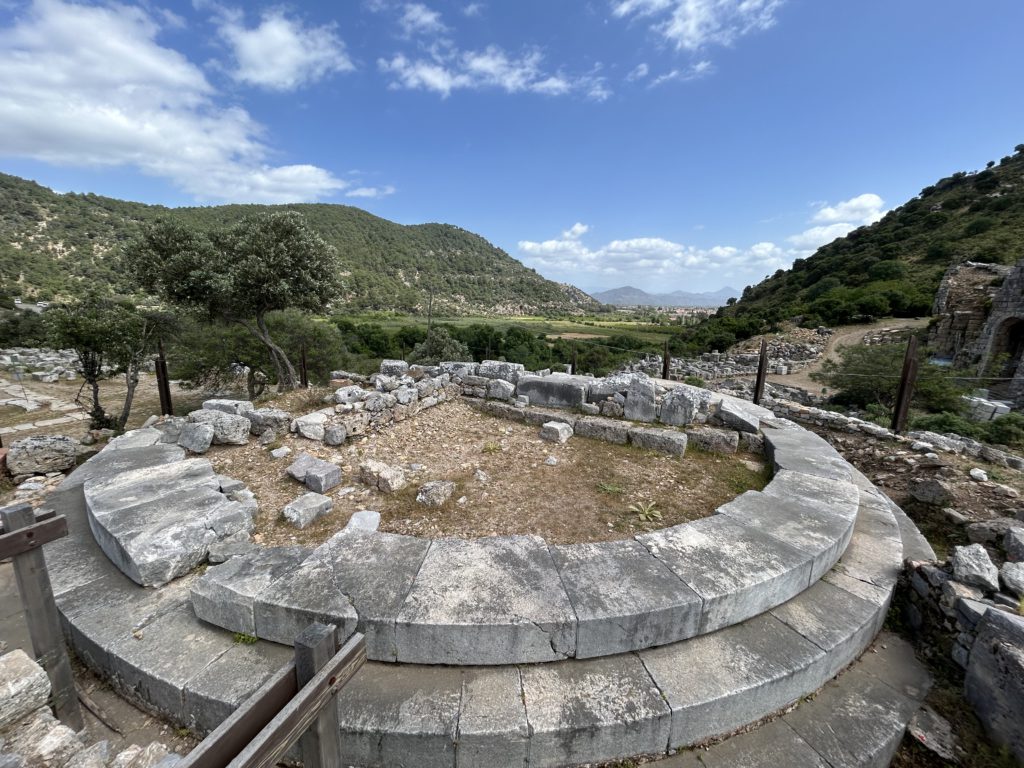Nestled in the picturesque landscape of southwestern Turkey, the ancient city of Kaunos lies just a few kilometers west of the modern town of Dalyan. This historic site, bordering the ancient kingdoms of Caria and Lycia, offers a unique blend of cultural influences from both regions. Its strategic location and rich history make Kaunos a significant archaeological and historical treasure.
Historical Background
Founded as a Carian city, Kaunos was strategically positioned on the border with Lycia, which led to a fascinating fusion of Carian and Lycian cultural elements. This dual influence is evident in the city’s architecture, inscriptions, and artifacts. The city thrived as an important port and trading center due to its advantageous position along the Mediterranean coast and its access to the inland areas via the Dalyan River.
Kaunos is renowned for its well-preserved urban layout and diverse architectural styles. Among the most striking features are the ancient city walls, which still stand as a testament to the city’s historical significance and defensive needs. The acropolis, perched on a hill, offers stunning views of the surrounding landscape and the river below, providing a glimpse into the strategic importance of Kaunos in ancient times.
The city is also home to an impressive theater, which showcases the typical Greek architectural style and could accommodate around 5,000 spectators. This theater, along with the remains of temples, baths, and an agora (marketplace), indicates the city’s prosperity and its role as a cultural and social hub.
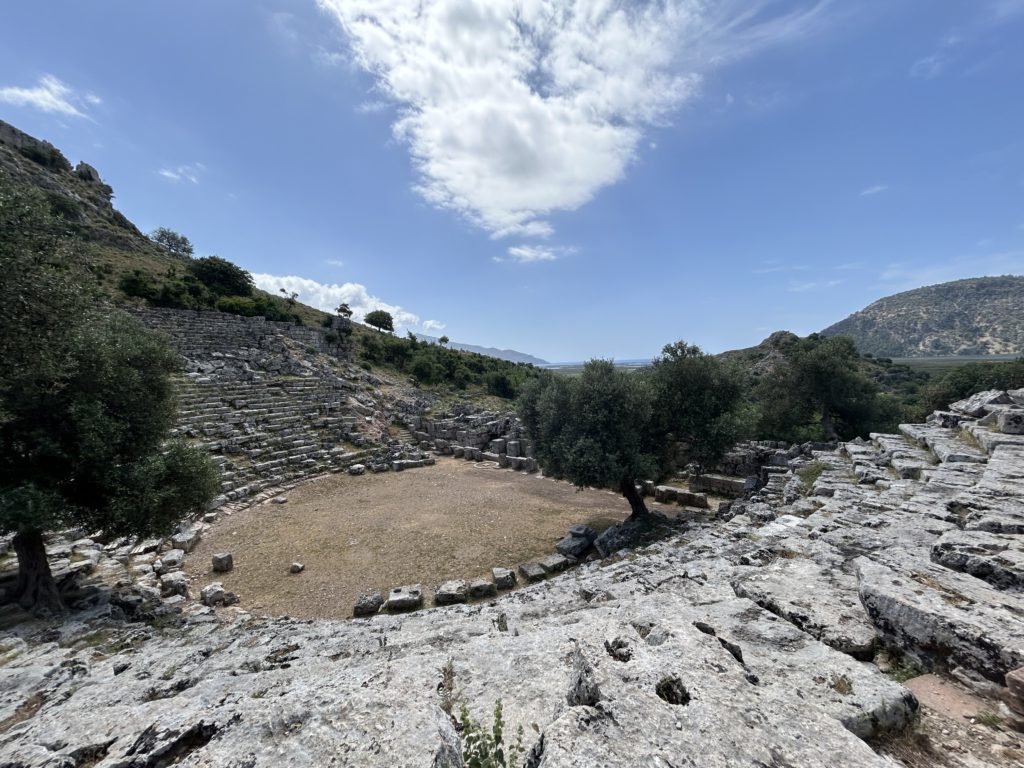
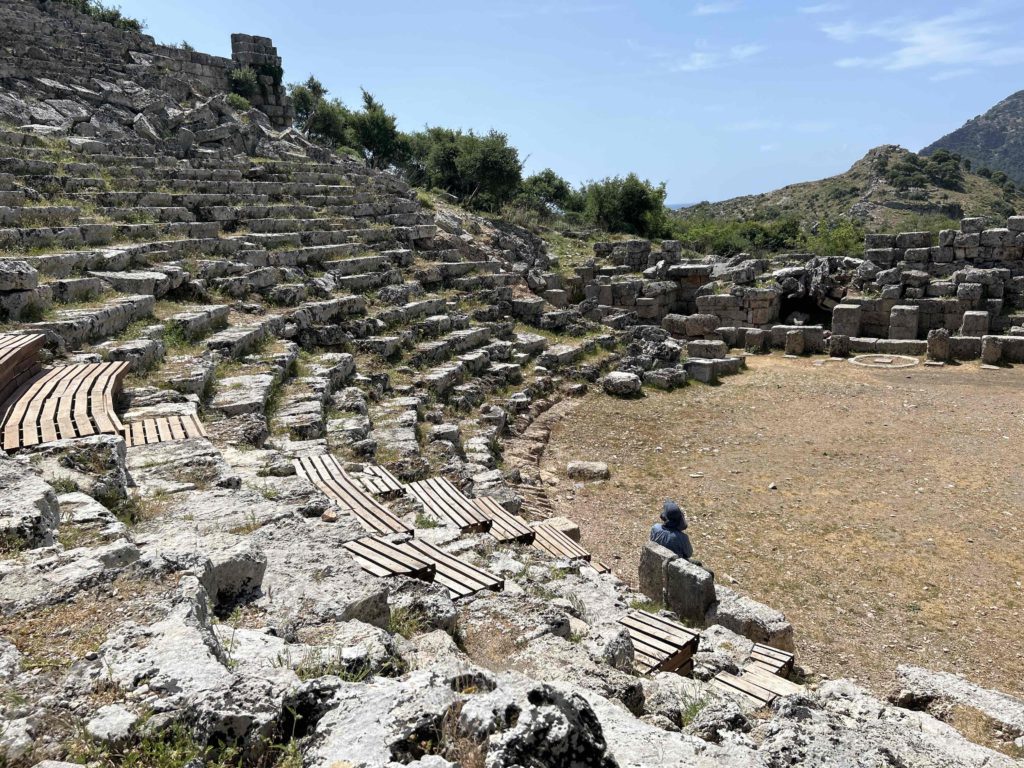
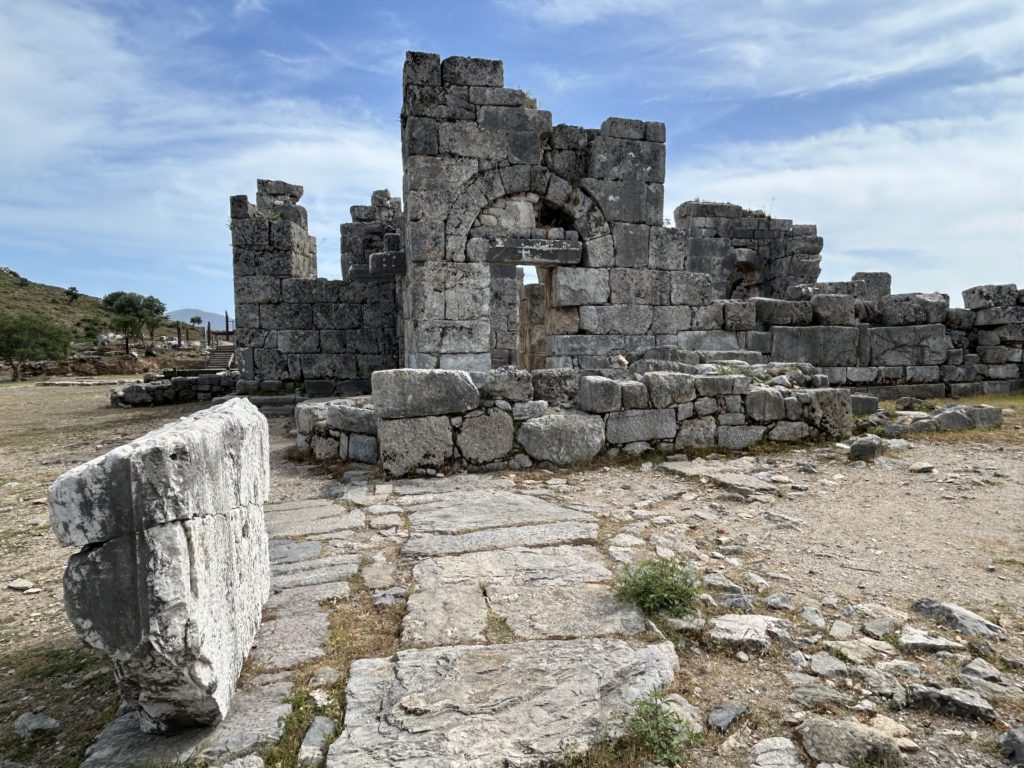
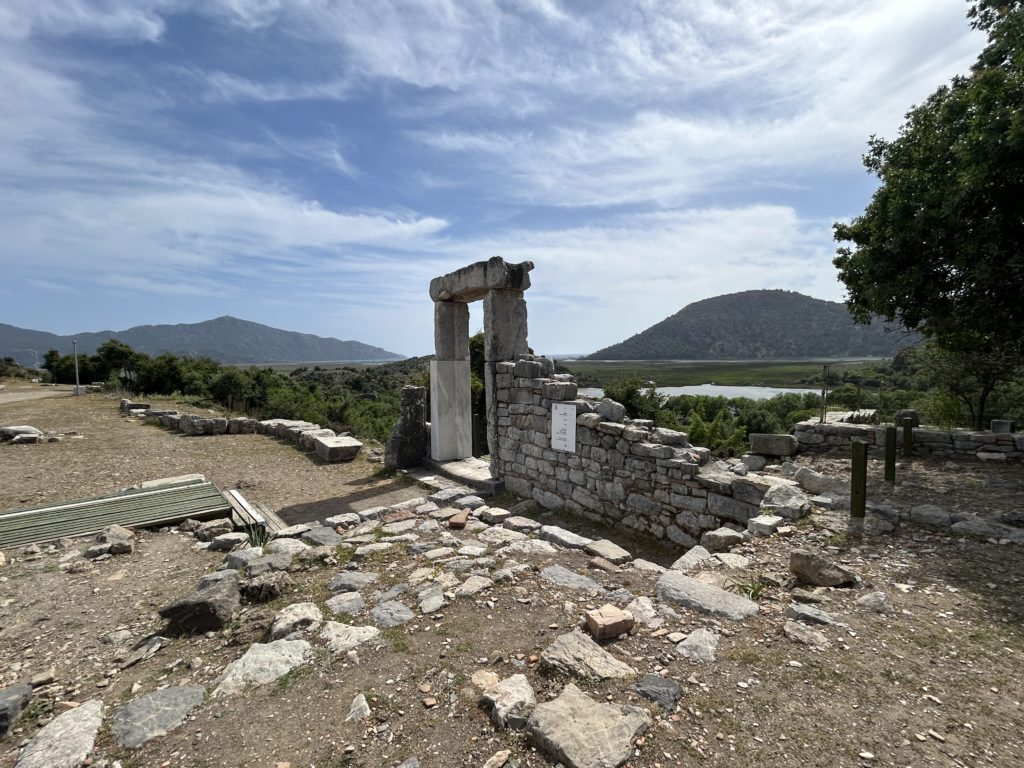
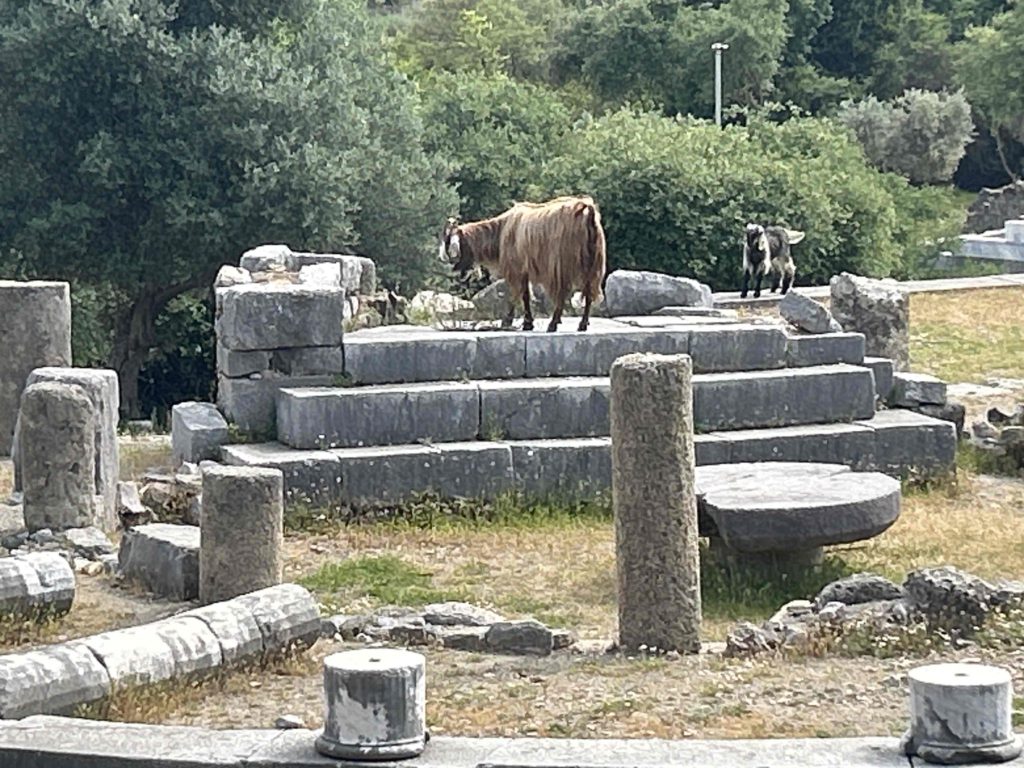
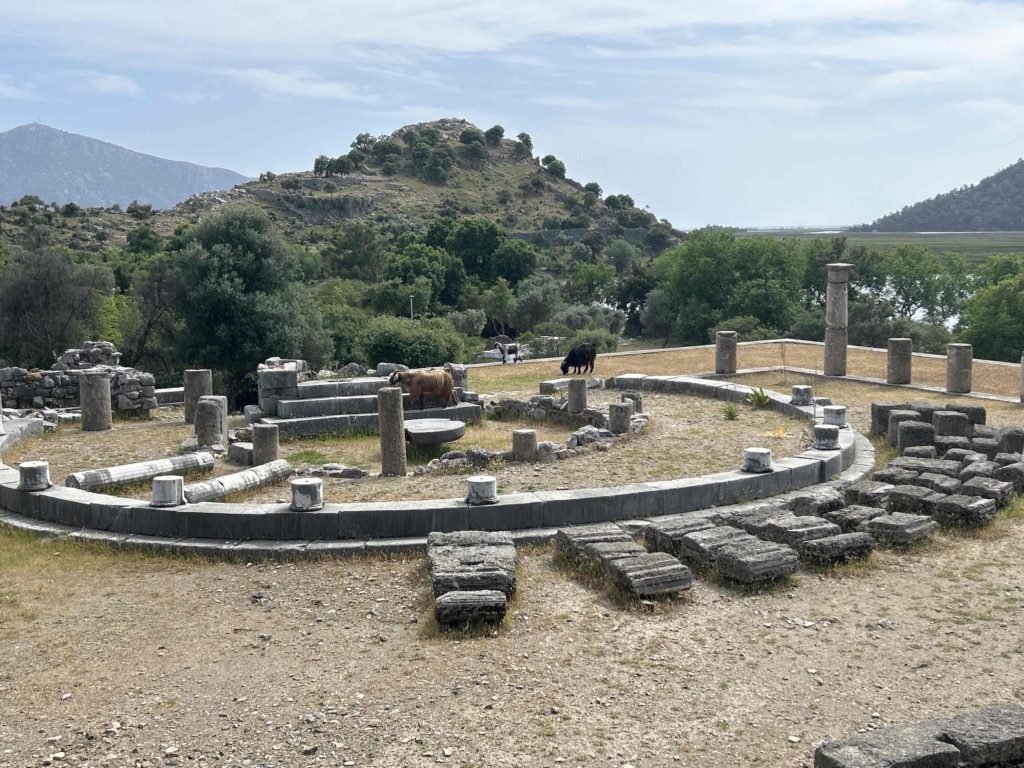
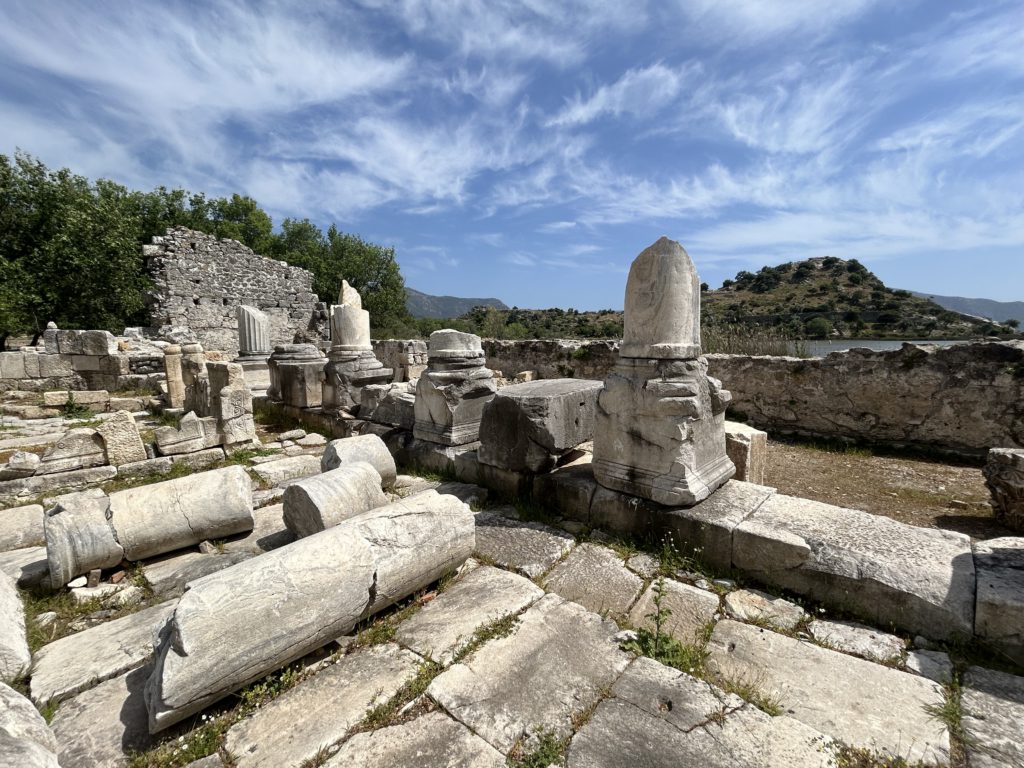
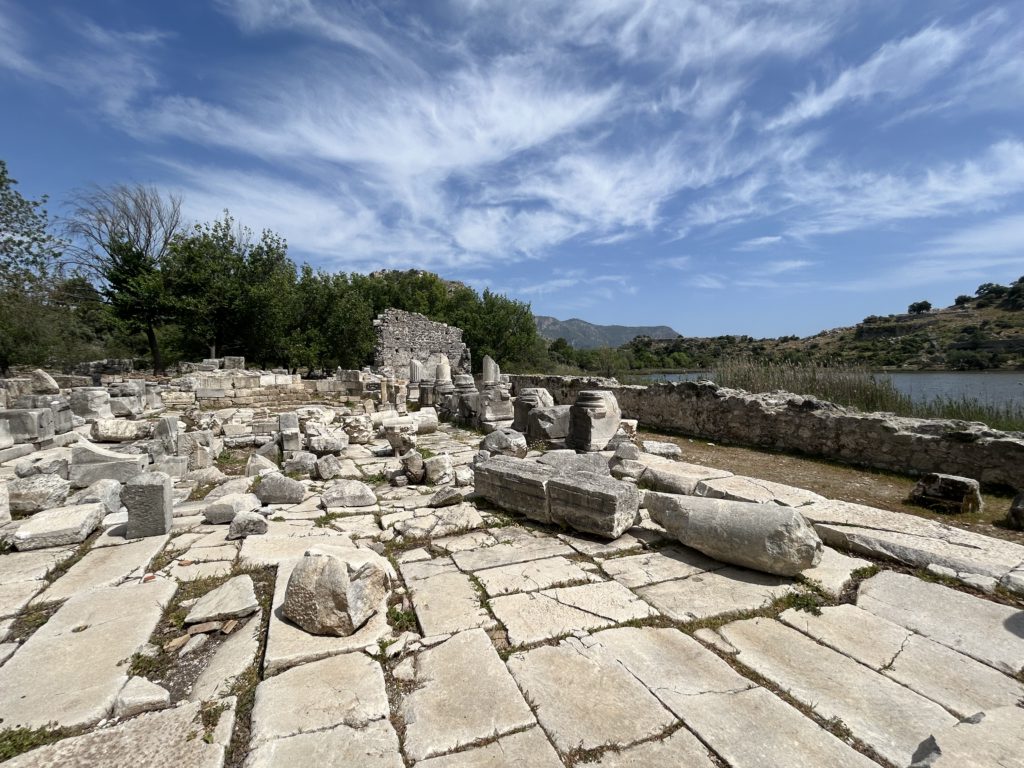

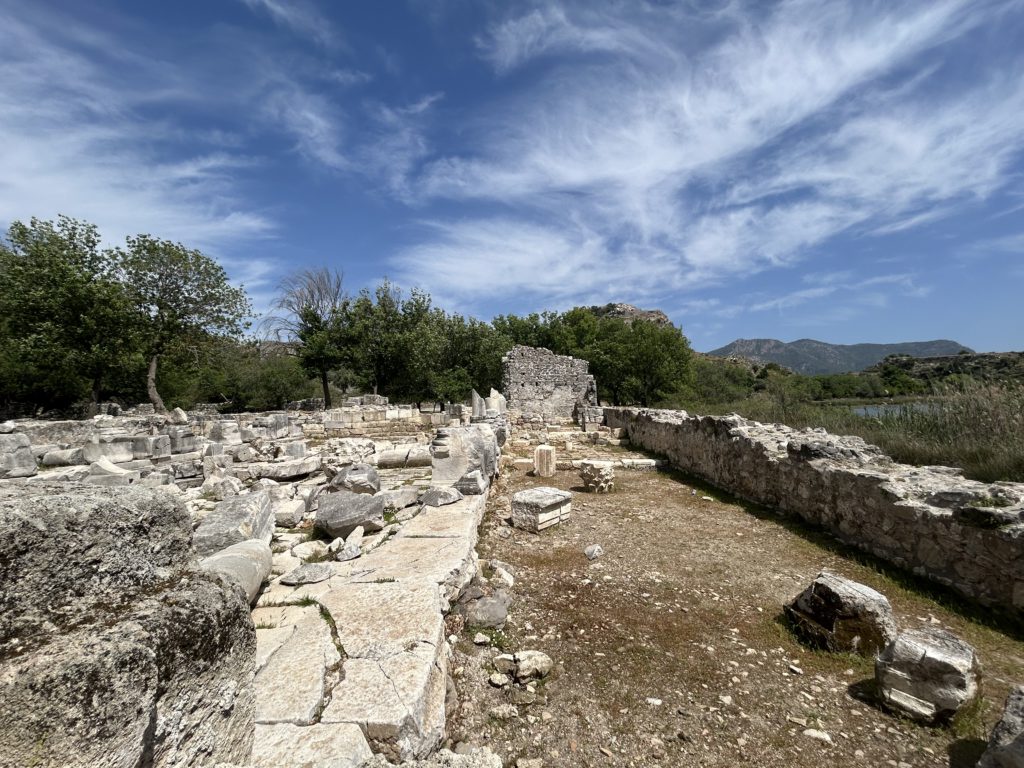
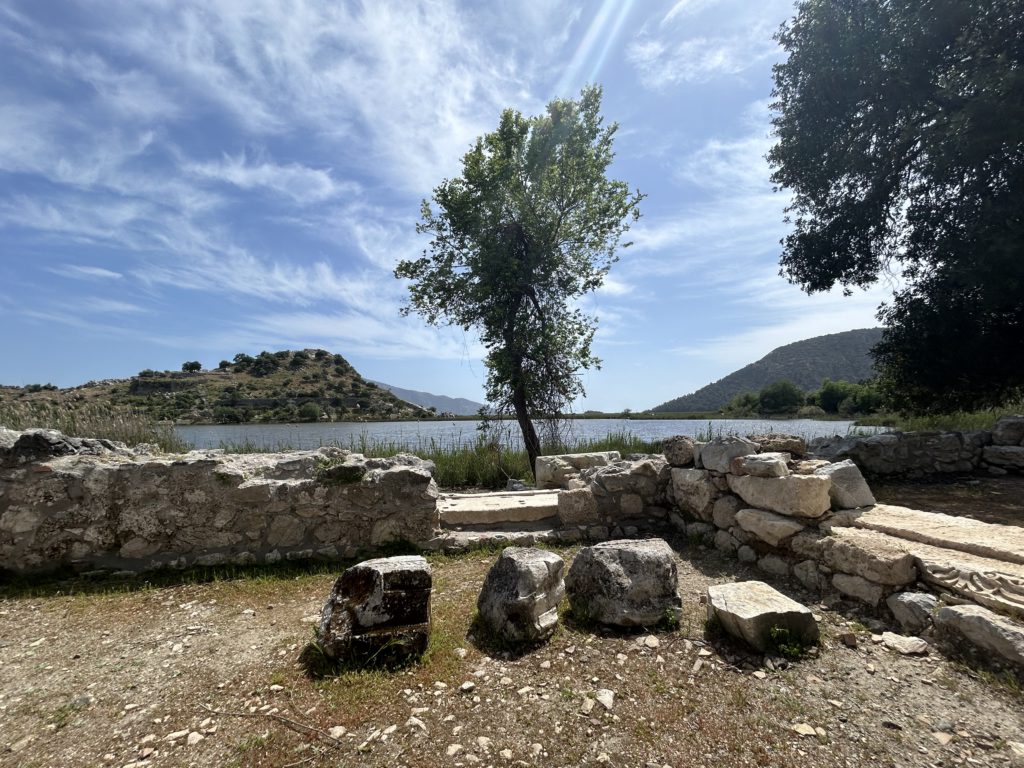
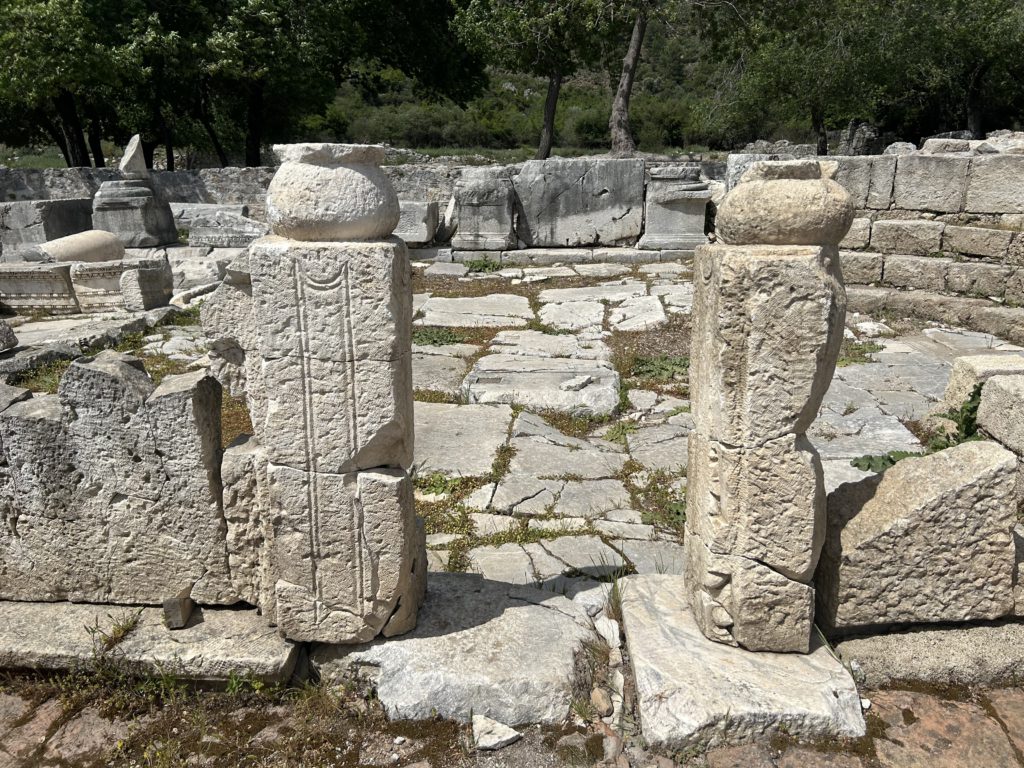

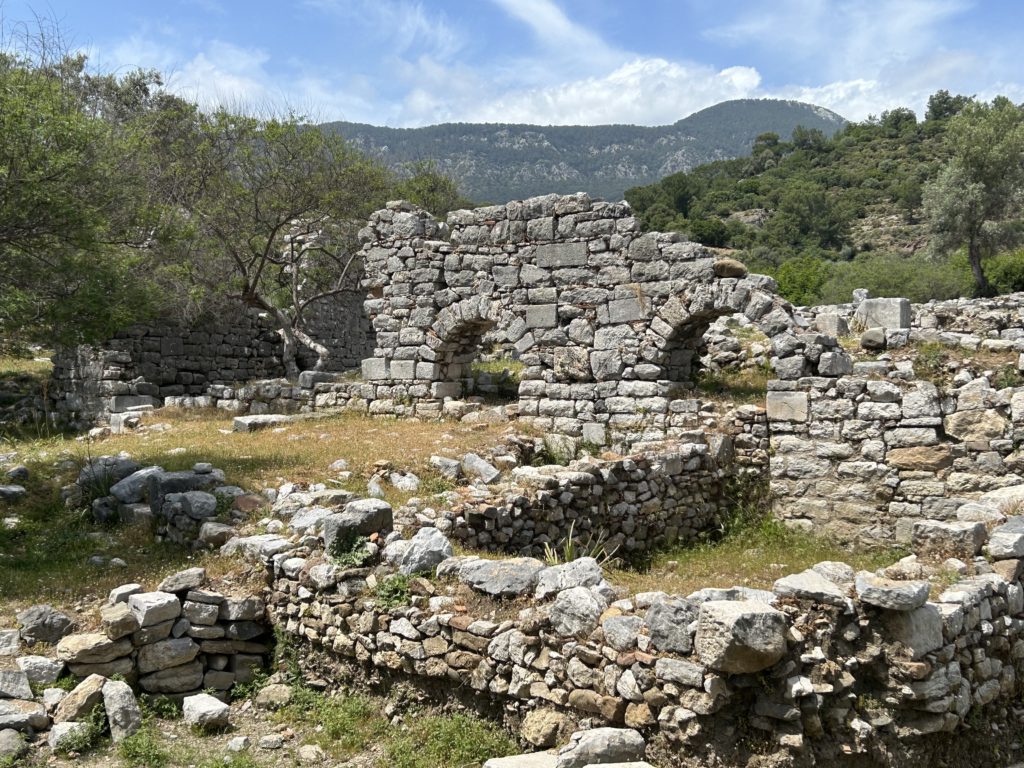
Rock Tombs and Necropolis
One of the most iconic features of Kaunos is its rock-cut tombs, which are carved into the cliffs overlooking the river. These tombs, resembling Lycian-style burial sites, are a remarkable sight and highlight the city’s connection to both Carian and Lycian traditions. The tombs were designed to honor the deceased with elaborate façades and intricate carvings, reflecting the beliefs and artistic skills of the ancient inhabitants.
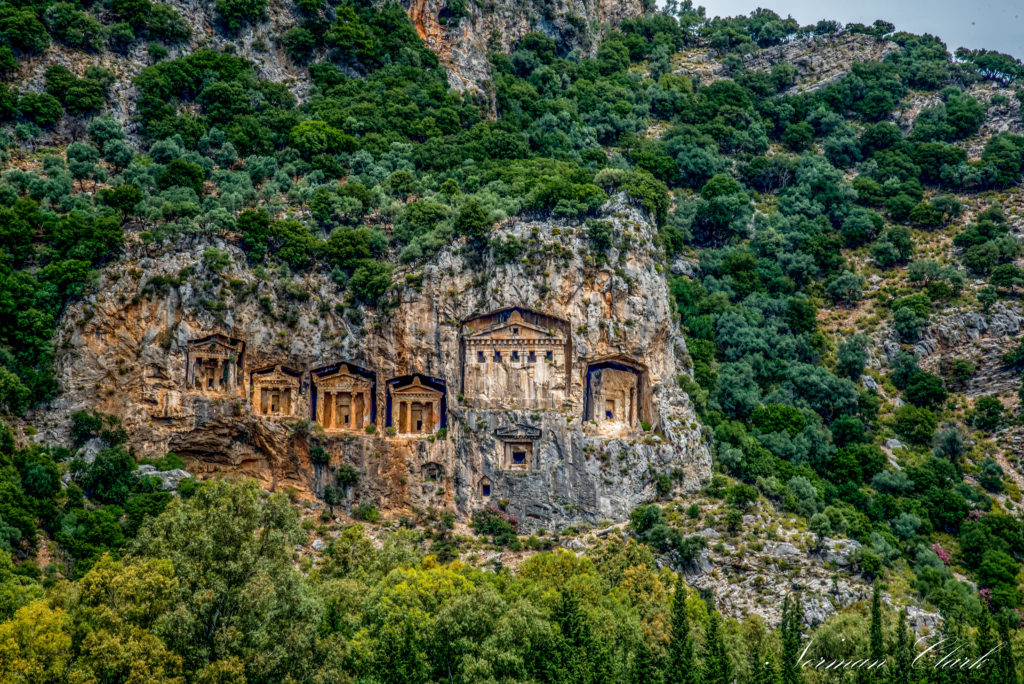
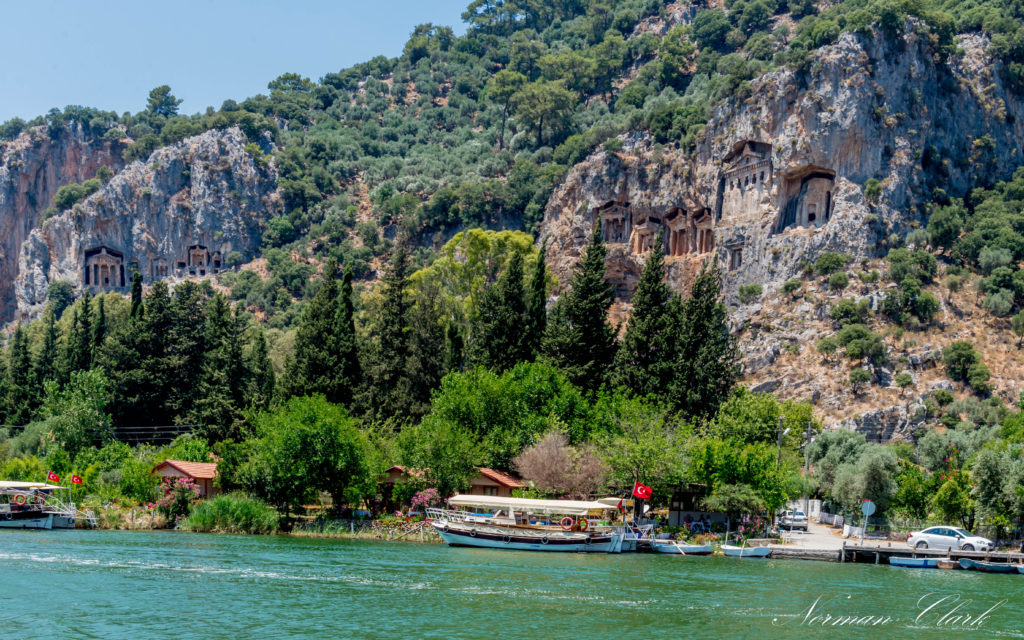
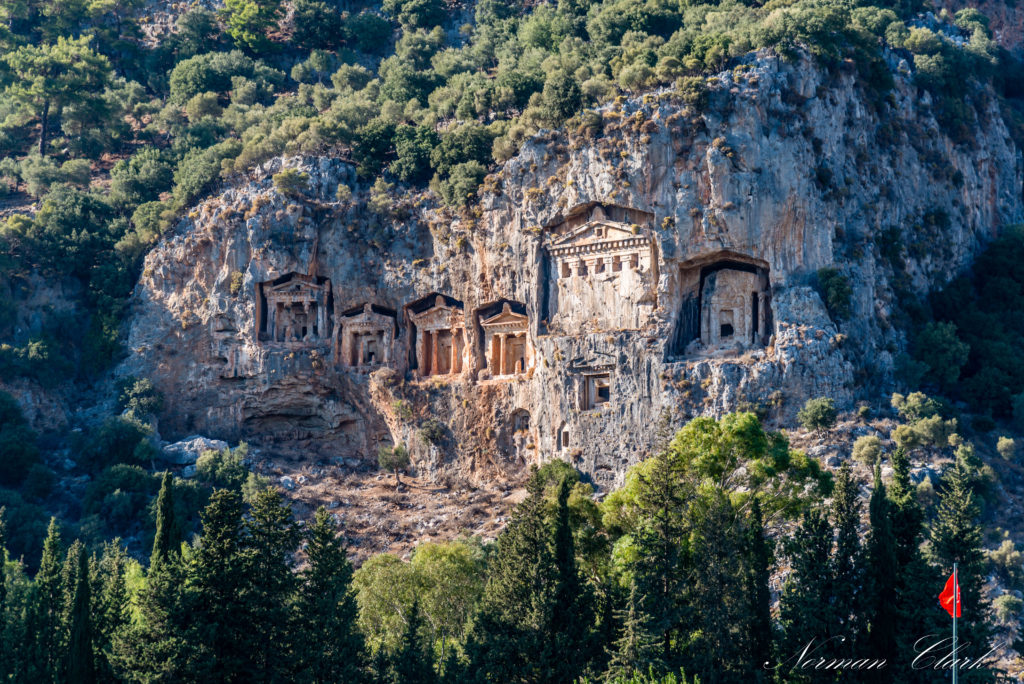
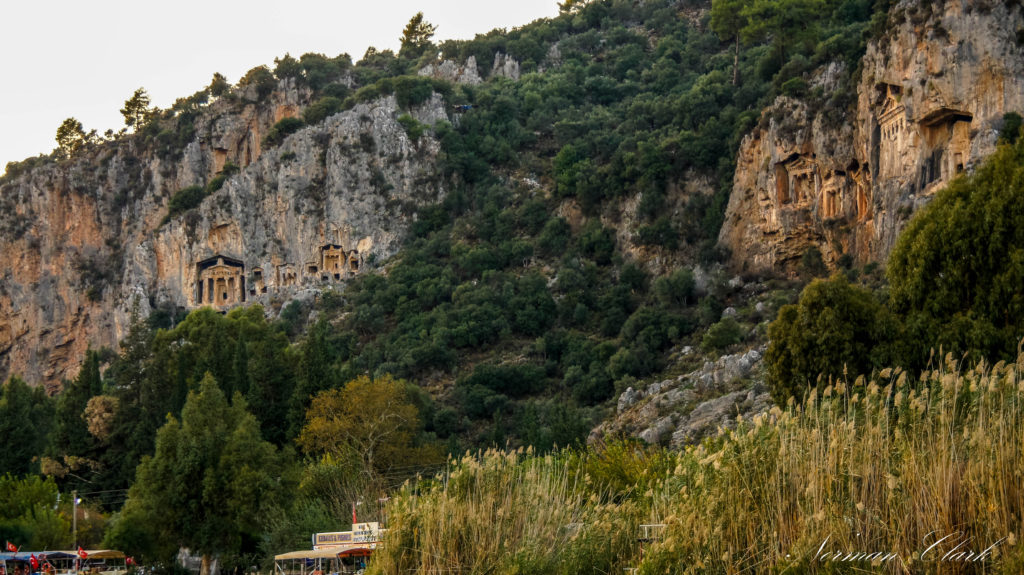
The necropolis of Kaunos also includes a variety of tomb types, from simple chamber tombs to more complex sarcophagi, illustrating the diversity in burial practices and the social hierarchy of the city’s population.
Kaunos played a crucial role in the ancient economy due to its strategic location as a port city. It facilitated trade between the interior regions of Anatolia and the broader Mediterranean world. The city’s economy was bolstered by the export of agricultural products, particularly figs, salt, and fish, which were highly valued commodities in ancient times.
Culturally, Kaunos was a melting pot where Carian and Lycian traditions intermingled with influences from other Mediterranean civilizations. This cultural diversity is reflected in the city’s religious practices, art, and daily life. The presence of inscriptions in both the Carian and Greek languages indicates a bilingual society that embraced a blend of indigenous and Hellenistic influences.
Modern-Day Kaunos
Today, Kaunos is an archaeological site that attracts visitors from around the world. Its proximity to Dalyan makes it an accessible destination for tourists interested in exploring ancient history and enjoying the natural beauty of the region. The site offers a glimpse into the past, with its ruins providing valuable insights into the lives and achievements of its ancient inhabitants.
Photos by Sami Payne and Norman Clark

